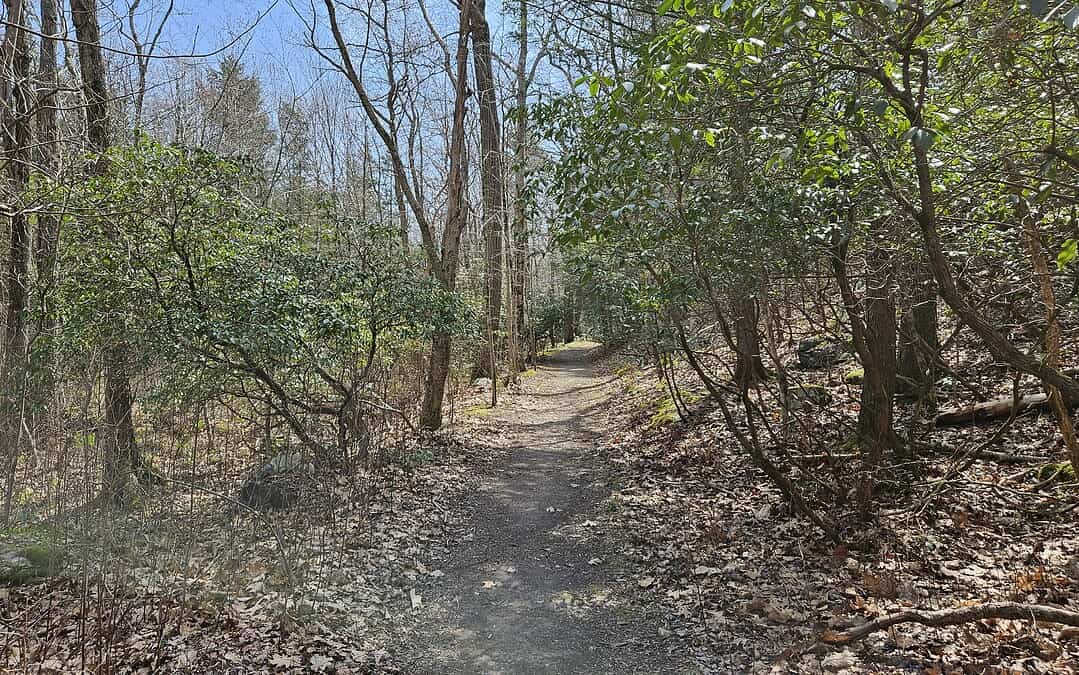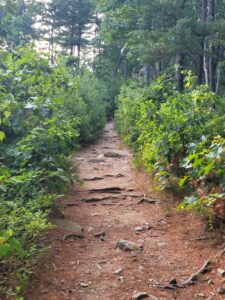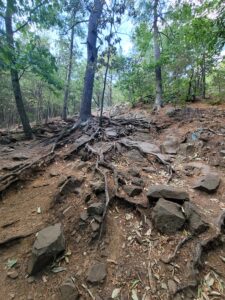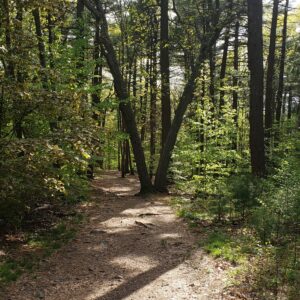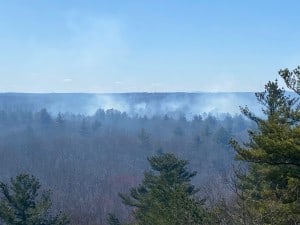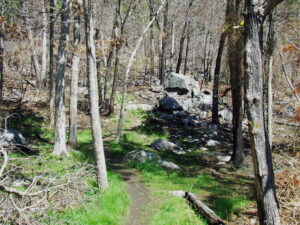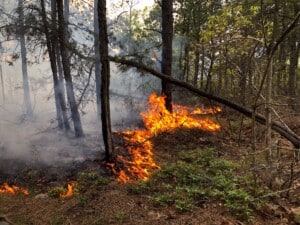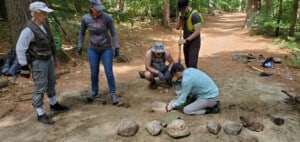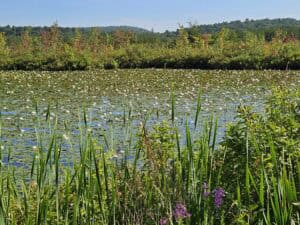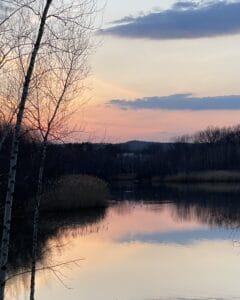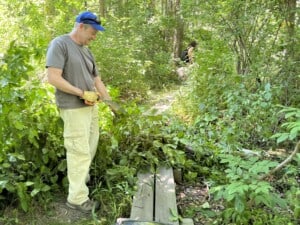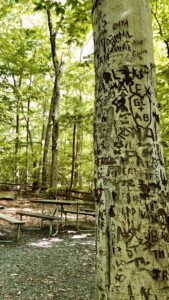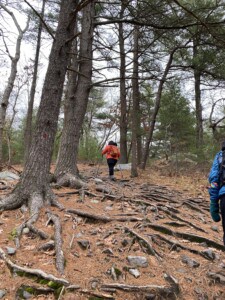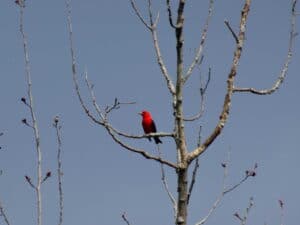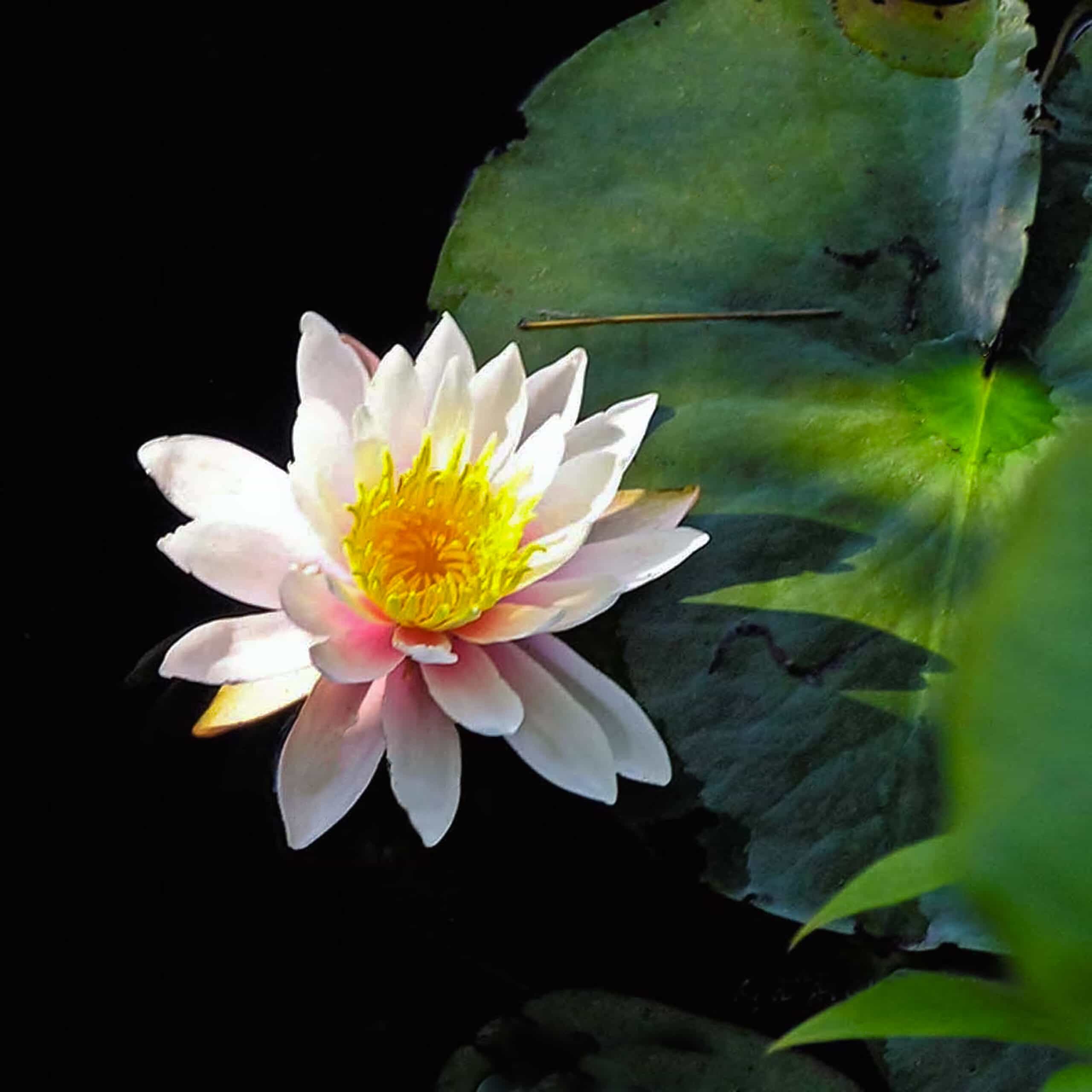Spring hiking in Massachusetts can seem a bit daunting. The weather is unpredictable, the trees are covered in pollen instead of leaves, and the trails are muddy. Rain and mud mean it is the best time to risk getting messy and explore the wetlands of the Blue Hills Reservation!
Marshy areas of the park, including Great Cedar Swamp, make for a perfect springtime hike. Water levels are high thanks to snow melt and April showers, so the wetlands are lush and green. Foliage and flowers are just starting to peek out and you have unobstructed views through the woods. Maybe best of all, this is one of the few times of year for avoiding pesky insects, while still spotting the first butterflies of the year like the Spring Azure.

Try following Wampatuck Path to Curve Path, continuing around the swamp on Laurel and Hemlock Paths for an easy loop.
So pick a nice day, pick a route, and let’s explore Great Cedar Swamp.
About Great Cedar Swamp
Great Cedar Swamp covers a 0.5 x 0.25 mile portion of the of the park near the Braintree border. The area takes its name from the American White Cedar (AWC), an evergreen tree common in peaty, acidic wetlands along the
Atlantic coast of North America. These cedar trees grow on raised mounds to help keep their roots out of the water and can be found both alongside other common trees, as well as in distinctive AWC bogs where they dominate the canopy. You can find an example of a AWC bog around Ponkapoag Pond.
Great Cedar Swamp is away from some of the more highly trafficked areas of the reservation, so expect a peaceful hike through this unique ecosystem. In addition to the cedars, you can explore stands of mountain laurels and oak trees, plus other native marsh plants growing along the beautiful mossy trails.
Great Cedar Swamp is accessible from parking areas along Chickatawbut Rd and Route 28. Try following Wampatuck Path to Curve Path, continuing around the swamp on Laurel and Hemlock Paths for an easy loop, or start from the Braintree Pass Path for a longer hike.
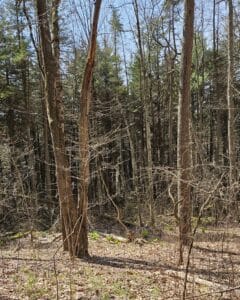
American white cedars and skunk cabbage are common wetland plants in MA.
Preparing for your hike
Once you pick a route, don’t forget to pack your sunblock, trail map, and plenty of water. And maybe most importantly, wear sturdy waterproof shoes.
The trails can be muddy well into May, so don’t be afraid to get a little dirty to protect our park. Trying to skirt around muddy patches can lead to erosion and habitat loss at the edge of trails, Occasionally, trails do flood in the case of heavy rain, so check for trail closures and look for signage noting closures and detours for a safe, dry hike.
Want to do even more to protect the Blue Hills? Check out these upcoming events to join in on a trail maintenance event, or consider donating to support free public programming.

